![]()
![]()
![]()
Use LEFT and RIGHT arrow keys to navigate between flashcards;
Use UP and DOWN arrow keys to flip the card;
H to show hint;
A reads text to speech;
18 Cards in this Set
- Front
- Back
|
Atrhrokinematics
|
movements of the actual joint surfaces
Generally one more stable than the other and serves as basis for the motion ex: roll, slide and spin |
|
|
Osteokinematics
|
Refers to movement of the bones
Flexion, extension, abduction, etc |
|
|
Planes of Motion
|
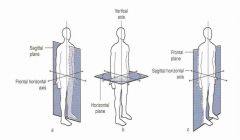
Sagittal
Frontal ( Coronal) Transverse |
|
|
Sagittal Plane
|
Divides the body into right and left halves
Motion is around a frontal (coronal) axis Usually forward and backward motions -Nodding the head |
|
|
Frontal (Coronal) Plane
|
Divides body into front and back halves
Movement is around an anterior-posterior axis Side to side movements -Side bending -Abb/adduction |
|
|
Transverse Plane
|
Divides body into upper and lower halves
Movements around a vertical (longitudinal) axis Movement occurs parallel to the ground -Rotational movements -twisting |
|
|
Types of Motion
(Osteokinematics) |
Flexion/Extension
Abduction/Adduction External (lateral)/Internal (medial) rotation |
|
|
Flexion
|
Movement that decreases the angle between two adjoining bones
-Raising arm -Sagital plane |
|
|
Extension
|
Movement that increases the angle between two adjoining bones
|
|
|
Abduction
|
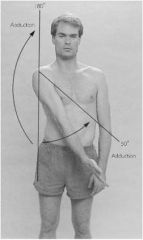
Joint movement away from midline of the body
|
|
|
Adduction
|
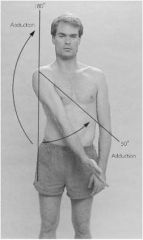
Joint movement toward midline of the body
|
|
|
External Rotation
|
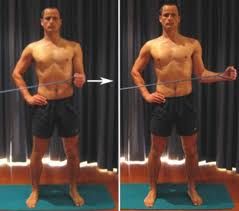
Rotation away from midline of body
|
|
|
Internal Rotation
|
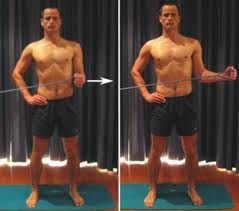
Rotation toward midline of body
|
|
|
Types of Motion: Ankle
|

Dorsiflexion
Plantarflexion Inversion/eversion |
|
|
Types of Motion: Forearm
|

Pronation/supination
|
|
|
Types of Motion: Wrist
|
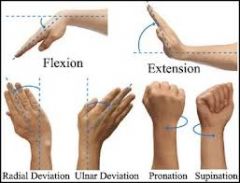
Ulnar and radial deviation
|
|
|
Types of Motion: Scaption
|
Abduction (or adduction) movement in the scapular plane
More functional motion of shoulder -Kinda in middle between true saggital/frontal plane Diagonal patterns -PNF -D1 extrension |
|
|
Body positioning
(Other Considerations) |
Standing
Sitting Supine Prone Sidelying |

